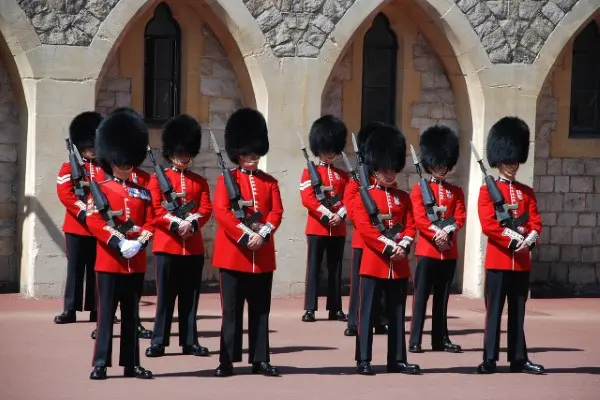The Most Noble Order of the Garter
The Order of the Garter is the oldest and most prestigious order of chivalry in the United Kingdom. Founded in 1348 by King Edward III, the order is dedicated to the ideals of chivalry, loyalty, and service to the monarch. Membership in the Order of the Garter is one of the highest honors that can be bestowed on a member of the British nobility.
The order takes its name from the garter worn by King Edward III, which was said to have fallen off during a dance. The king picked up the garter and placed it on his own leg, saying "honi soit qui mal y pense" ("shame on him who thinks ill of it"). This phrase is now the motto of the order and is inscribed on the badge worn by members of the order.
The Noble King
The true origins may never be known as the earliest records were sadly destroyed in a fire. Historians are therefore uncertain of the origin of the motto, the original purpose of the order and the meaning and significance of the emblem.
One story that circulated, is that whilst Edward was dancing at court with a female, her blue garter fell to the floor. As the bystanders cruelly mocked the King’s dancing partner, he picked up the garter and fastened it to his own leg. He then admonished the heckling courtiers saying, “Honi soit qui mal y pense.” This became the motto of the Order. Which in English means shame to him who thinks evil of it or evil to him who evil thinks. Whether this incident is true or not is another matter, but it is a popular story of the orders beginnings.
The King completed the inauguration of the Order with a feast and a joust. The lady friend forever immortalised remains a mystery, but gossip suggests the King’s cousin Joan the ‘Fair Maid of Kent’ but other historians have offered the Countess of Salisbury and Queen Philippa of Hainault.
Distinguished Membership
The Order of the Garter has a maximum of 24 members, plus the sovereign and the Prince of Wales. Members are appointed by the monarch and are chosen for their service to the crown, their contribution to public life, and their personal qualities. The members of the order are known as Companions, and they are entitled to wear the distinctive insignia of the order, which includes a blue velvet mantle, a collar of garter badges, and a black velvet hat with white plumes.
The Order of the Garter has a rich history and has been associated with some of the most important figures in British history. Many monarchs, prime ministers, and other notable figures have been members of the order. The order has also been a source of inspiration for artists, writers, and musicians, and it has been celebrated in many works of art and literature.
There is only one rank and that is Knight Companion. Because it is the most distinguished and exclusive orders of knighthood many illustrious names have been included in the membership. Henry VIII was responsible for beheading 6 members for dishonour out of the 36 who met this grisly fate. In 1945, Winston Churchill refused the honour saying, “One can hardly accept the Order of the Garter after the people have given me the Order of the Boot.” He relented in 1953 and was inducted.
The Order of the Garter Ceremony
The annual Garter Day ceremony takes place in June at Windsor Castle. The ceremony includes a procession of knights and the installation of new members of the order. The members of the order are accompanied by the Military Knights of Windsor, who are retired officers of the armed forces and who live in the precincts of Windsor Castle.
Little has changed since medieval times, with the Monarch and Prince of Wales each having 12 companions. The Order today consists of the Queen/King and consort, the Prince of Wales and 24 Knights Companion (excluding the ladies of the garter and other royal sons). The Sovereign and Prince of Wales will always be members of the Order. Selection is purely at the discretion of the British Monarch. Recipients are entitled to be addressed as ‘Sir’ and add KG after their names.
St Georges Chapel
St George’s chapel at Windsor is the home of the Order. Each Knight has a dedicated stall and placed in it are his helmet, banner and a stall plate bearing his arms. Banners and helmets are removed after death, but the stall plates remain. The oldest dates to around 1390.
As a result, St Georges Chapel is recognised globally as Europe’s finest collection of heraldic design. The Insignia of the Order includes the garter with motto, the star with St George’s cross and a collar representing St George and the dragon.

St. George's Chapel
St. George's Chapel
Changing of the Guard
Changing of the Guard

